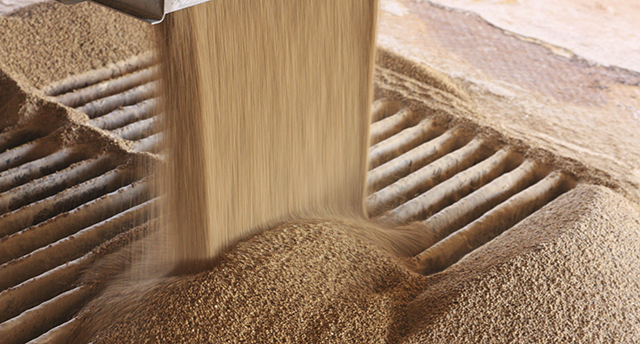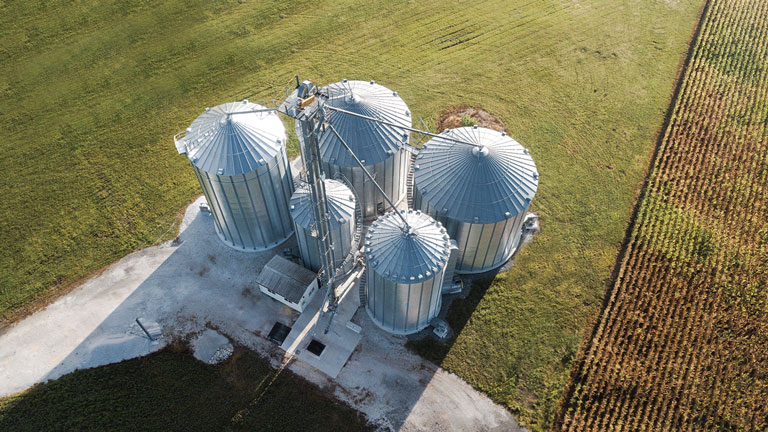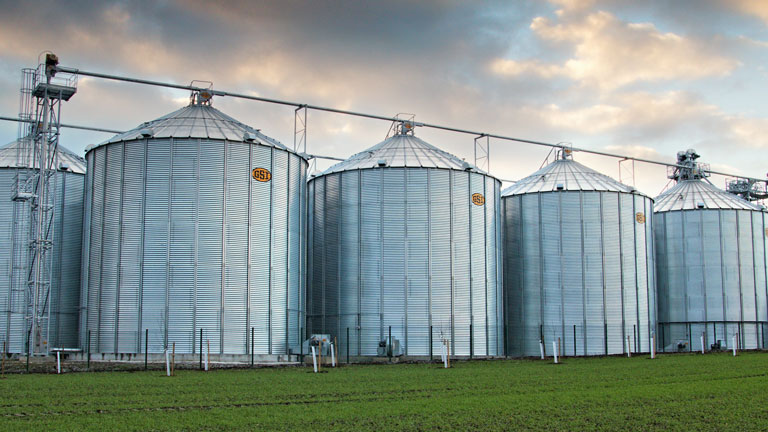Farmers know how important quality grain is. It can feel like a gut punch to get your settlement statement and see dockages for the grain you just delivered.
But what exactly determines grain quality requirements? In corn for example, there is the USDA standard Number1, Number 2 and Number 3, etc. These gradings are based on factors such as amount of particulate matter, foreign matter and moisture in your grain. Test weight is a significant marker for quality as well, because it falls as grain quality deteriorates.
Grades and Grade Requirements
§ 810.404 Grades and grade requirements for corn.
| Grade | Minimum Test Weight per Bushel | Maximum Limit of Heat Damaged Kernels | Maximum Limit of Total Damaged Kernels | Maximum Limit of Broken Corn and Foreign Material |
| U.S. No. 1 | 56 lb. | .1% | 3% | 2% |
| U.S. No. 2 | 54 lb. | .2% | 5% | 3% |
| U.S. No. 3 | 52 lb. | .5% | 7% | 4% |
| U.S. No. 4 | 49 lb. | 1% | 10% | 5% |
| U.S. No. 5 | 46 lb. | 3% | 15% | 7% |
U.S. Sample Grade
U.S. Sample grade is corn that:
(a) Does not meet the requirements for the grades U.S. Nos. 1,2,3,4, or 5; or
(b) Contains stones with an aggregate weight in excess of 0.1 percent of the sample weight, 2 or more pieces of glass, 3 or more crotalaria seeds (Crotalaria spp.), 2 or more castor beans (Ricinus communis L.), 4 or more particles of an unknown foreign substances(s) or a commonly recognized harmful or toxic substance(s), 8 or more cockleburs (Xanthium spp.), or similar singly or in combination, or animal filth in excess of 0.20 percent in 1,000 grams; or
(c) Has a musty, sour, or commercially objectionable foreign odor; or
(d) Is heating or otherwise of distinctly low quality
Source: USDA Corn Grade Requirements
Most grain quality issues happen after corn has been harvested. Not drying appropriately is the most significant factor in corn grain quality, but poor handling can lead to concentrated fines and broken grain. These factors all play into the marketability of your crop.
Tips for Holding on to Grain Quality
It’s possible to almost guarantee that you can hold grain in your bin for up to two years with no losses, by following a simple set of rules for grain handling and storage.
While most of these pertain specifically to corn, the same basic rules can be applied to soybeans, wheat and rice. The key is to get the grain properly dried, handle it lightly, and use aeration to get the grain cooled quickly and keep the temperature down.
- Dry grain to an ideal moisture.
- 15 percent for grain left cold and sold in the spring
- 14 percent for grain to be held until fall
- 13 percent for grain that you plan to hold for more than a year
- Run the aeration fans as grain enters the bin to equalize moisture - this can take 5 to 10 days, but it keeps the grain in its best condition for storage.
- Get the temperature of the grain below 50 degrees ASAP - this is where nearly all insect and mold activity ceases.
- Pull the bins with peaked grain down so the center is just below the corn at the wall. The grain will look like an “M” from the side. This promotes air movement in the center.
- As soon as possible bring the grain down into the 30’s. In the spring keep the grain temperature within 10 degrees of the ambient average and after the ambient gets above 50 manage aeration to keep the grain as cool as possible for the rest of the summer.
- Check the grain weekly for crusting or a noticeable smell. If anything is wrong, start aeration, and if that won’t fix it, your best bet is to unload the affected grain so it won’t impact remaining grain.
Giving Your Farm a Grain Quality CheckUp
Evaluating how well your system handled the grain you harvested is one of the most important steps you can take to prepare for next year, and postharvest is a great time to think these over.
- Handling – While it’s still fresh on your mind, postharvest is a great time to think through where your handling bottlenecks are and evaluate them for improvement.
- Dryer capacity – Grain should be dried the same day it is harvested, so if you noticed wet grain sitting in the hopper for more than a day, it might be time to consider increasing dryer capacity in order to protect next season’s investment.
- Storage capacity – Lower than necessary storage capacity can lead to more trips to the elevator and less time in the field getting the crop out. If this happened on your farm, expanded storage may be worth looking into for your operation.
- Maintenance – Grain bins and dryers should be thoroughly cleaned and inspected as soon as they are emptied. You may find worn motors and belts, damaged downspouts, noisy gear boxes, worn flights on augers and oil leaks - all small repairs that over time can impact your efficiency in a big way.
- Safety – Post-harvest is an excellent time to consider opportunities to improve safety in your setup, such as roof stairs or peak platforms on bins. It’s also a great time to make sure all your current safety precautions are in good working order. This could mean checking to see if bin safety cages are secure, and ensuring all safety shields on motor drives and dump points are in good condition.
Why Grain Quality Matters
It takes a lot of work to get a crop in. And a lot of money. Which is why protecting grain quality is so vital for every operation. High quality grain means less dockage at the elevator and more money for your bushels. And with proper drying, handling and storage, your grain can see it’s full potential.





